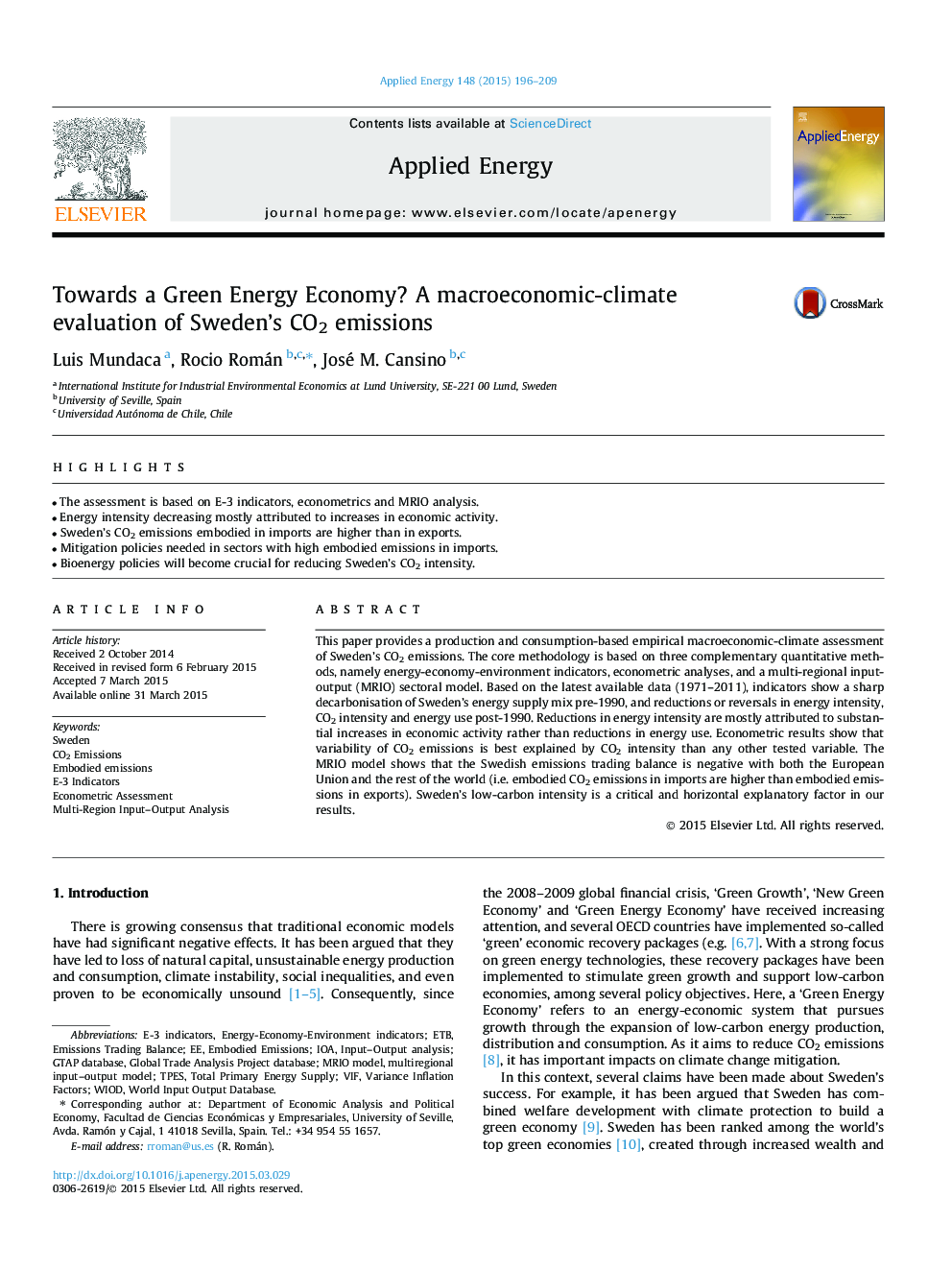| Article ID | Journal | Published Year | Pages | File Type |
|---|---|---|---|---|
| 6687275 | Applied Energy | 2015 | 14 Pages |
Abstract
This paper provides a production and consumption-based empirical macroeconomic-climate assessment of Sweden's CO2 emissions. The core methodology is based on three complementary quantitative methods, namely energy-economy-environment indicators, econometric analyses, and a multi-regional input-output (MRIO) sectoral model. Based on the latest available data (1971-2011), indicators show a sharp decarbonisation of Sweden's energy supply mix pre-1990, and reductions or reversals in energy intensity, CO2 intensity and energy use post-1990. Reductions in energy intensity are mostly attributed to substantial increases in economic activity rather than reductions in energy use. Econometric results show that variability of CO2 emissions is best explained by CO2 intensity than any other tested variable. The MRIO model shows that the Swedish emissions trading balance is negative with both the European Union and the rest of the world (i.e. embodied CO2 emissions in imports are higher than embodied emissions in exports). Sweden's low-carbon intensity is a critical and horizontal explanatory factor in our results.
Keywords
Related Topics
Physical Sciences and Engineering
Energy
Energy Engineering and Power Technology
Authors
Luis Mundaca, Rocio Román, José M. Cansino,
